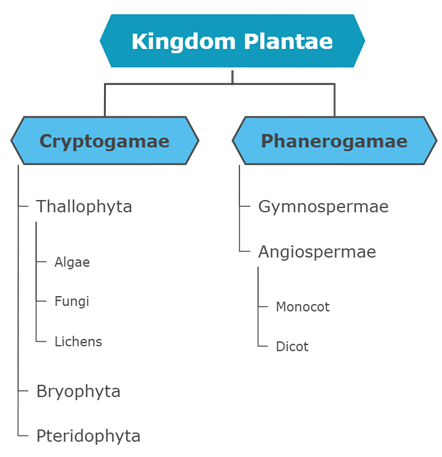
PUMPA - SMART LEARNING
எங்கள் ஆசிரியர்களுடன் 1-ஆன்-1 ஆலோசனை நேரத்தைப் பெறுங்கள். டாப்பர் ஆவதற்கு நாங்கள் பயிற்சி அளிப்போம்
Book Free DemoPlantae:
It is a kingdom that comprises of multicellular eukaryotic organisms. These organisms are autotrophs as they use chlorophyll for photosynthesis. There are very few species, which are both autotrophs and heterotrophs. Hence, all the plants are included in this kingdom.
As the plants of the kingdom planate are classified based on the differentiation of its body parts, the first level of classification depends on the criteria that whether the plant body has well-differentiated, distinct parts.
The next level classification of plants depends on the presence of special tissues in these differentiated tissues for the transport of water and other substances. The ability to bear seeds and whether the seeds are enclosed within fruits is the criteria for further classification.
Kingdom Plantae can be broadly classified into four evolutionarily related groups:
- Bryophytes (mosses)
- Pteridophytes (seedless vascular plants)
- Gymnosperms (cone-bearing seed plants)
- Angiosperms (flowering seed plants)

Based on the ability to produce seeds, the plants are classified as,
- Cryptogams - All the phyla of plants which do not produce seeds are together known as cryptogams.
- Phanerogams - The phyla of plants which produce seeds are known as phanerogams.